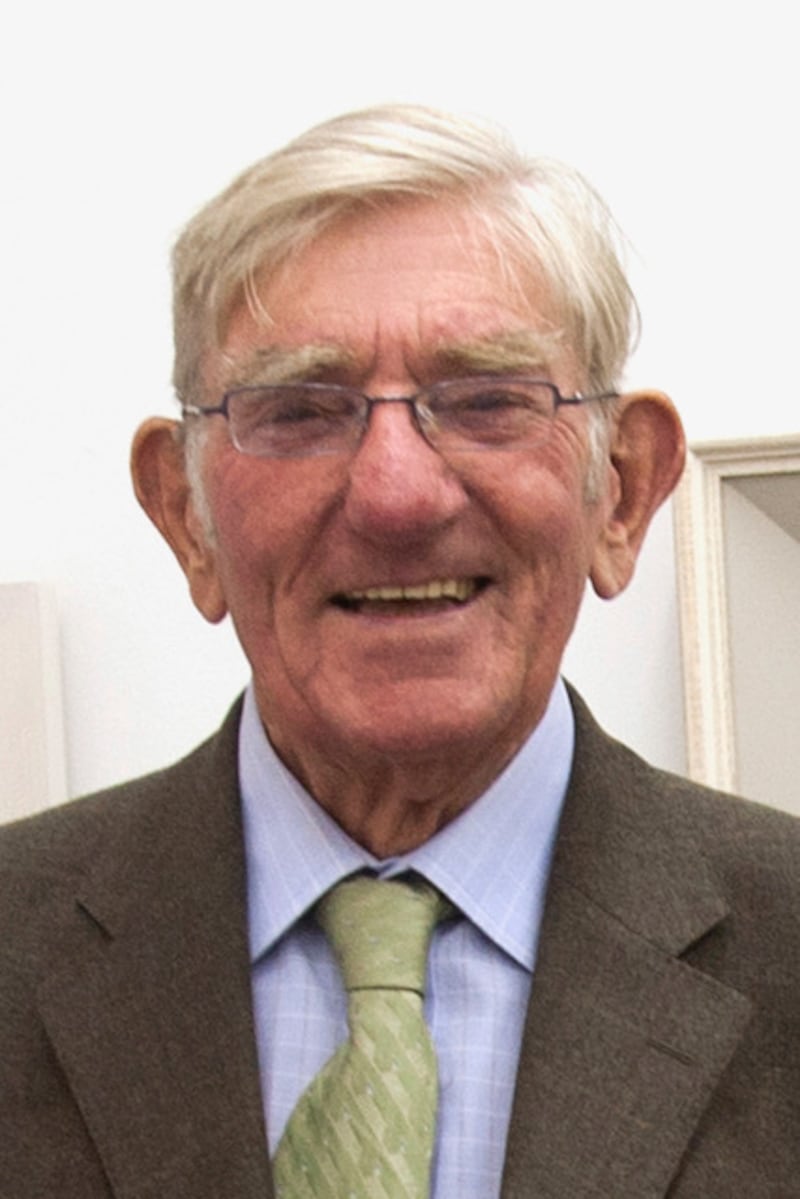Born: August 18th, 1930
Died: May 21st, 2023
Talking to Mike Fitzpatrick in 2008, Walter Verling recalled that when he was about 13 and staying with an aunt in Midleton they took a walk at East Ferry, during which he became possessed by the desire to capture the fine view of Cork Harbour. At that point he had not, to his recollection, ever lifted a paintbrush.
His obliging parents arranged lessons with an artist in Clonmel, Dickie Long. The urgent imperative to respond to a view by making a painting remained with him throughout his life. As he explored the west and southwest over the years, “scanning the countryside [for] archaeological remains, geographical formations and architectural features”, he was always, as his daughter Katie wrote, “looking for paintings”. Finding a painting meant setting up an easel, laying out a palette and hoping the weather stayed fair because Verling was a plein air painter in the European tradition — a challenging pursuit in the mercurial Irish climate.
He was born in New Ross, though both his parents, Madeline (nee Barry) and St John Verling, were from Co Cork (Midleton and Newmarket, respectively). The family moved back to Cork, settling in Mallow in 1943 and later in Midleton. Once he’d begun painting, Verling was smitten, and his parents consented to his attending the Crawford School of Art rather than going to university. He met and befriended the painter Charles Lamb, whose work he greatly admired, in 1953 in Carraroe, where Verling was taking Irish lessons — necessary for a teaching qualification — and they began to embark on painting trips together locally. He greatly enjoyed joint painting excursions and later on painted regularly with the highly talented Cormac Mehegan, artist and designer for Youghal Carpets.
He met Louise Reidy, or Louise Ní Riada, a music teacher and the sister of composer Seán Ó Riada, in 1961, and they married the same year, settling first in Youghal. Their daughter Katie, the first of four children, was born the following year. A pattern was established whereby Verling painted while also working as a teacher, but he was frustrated by having to constantly travel to make up teaching hours, leaving him exhausted by the weekend. He jumped at the chance when offered a job at a new school in Carraroe. He always enjoyed teaching, relishing engagement with students. He also liked the surroundings and the freedom to paint full-time offered by the summer holidays but didn’t hesitate when offered a position at the Mary Immaculate teacher training College in Limerick in 1970. Louise taught music at the Presentation College in the city.
Why does Micheál Martin allow himself to look so comfortable with shady deals?
Should Ireland revisit its neutrality? Prof Ben Tonra and Dr Raymond Murphy debate
Cockfighting has been banned for two centuries so why is it still happening in Ireland?
Blue zones, where people live to 100, are a lovely idea. It’s a shame they don’t exist
In Limerick, fewer teaching hours meant more painting hours, and summers spent at a thatched cottage they built in Connemara. Verling was a stern critic of his own work. As a plein air painter, he was inspired by his European precursors who flocked to Italy early in the 19th century, especially Camille Corot, whose studies of the Roman Campagna in the 1820s set an unsurpassed standard. Ideally, Verling liked to complete a painting in a single sitting or, if that was not possible, to return to the same location and continue. He was often thwarted by the weather, and the restless Irish light was tricky, but he rose to the challenge. He felt the daily practice of painting was essential to ensure high standards.

His painting possesses a kind of exhilarated vivacity, charged with the excitement of the moment and a delight in the appearance of things. He counts as an influence on such landscape painters as Blaise Smith and Mick O’Dea. When Mike Fitzpatrick commented on the joy in his work, he responded, accurately: “It is a joy for life.” He returned to Youghal in 2005, the year of his wife’s death. Although he did not warm to the routine of regular exhibitions, there were many notable solo shows throughout his life at venues in Youghal, Cork, Limerick, Galway and Dublin. There was a fine retrospective at the Limerick City Gallery of Art in 2008, plus annual appearances at the RHA from 1978. His work is included in numerous public and private collections.
He is survived by his children Katie, Eithne and Francis, grandchildren and his extended family.














